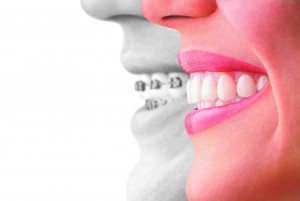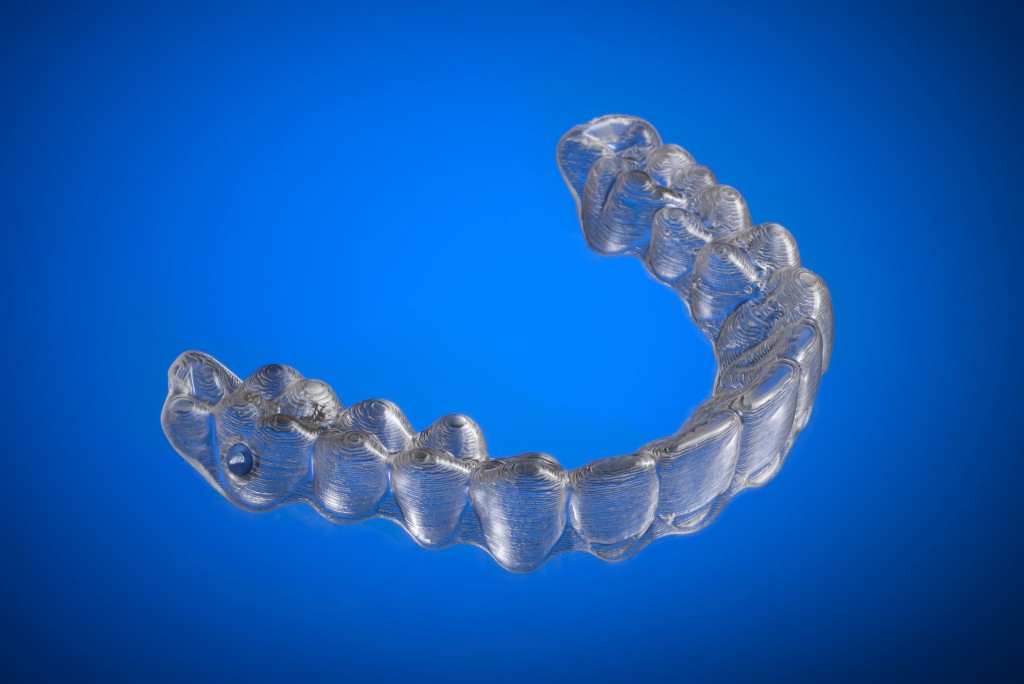I’m one of many who spent a few not-so-glamorous years in braces. I remember the awkward, painful process involved with wires, head gear, rubber bands, and tightening. And on that glorious day when I finally achieved a metal-free mouth, I was informed that I’d have to wear a retainer for the rest of my life to keep my teeth straight. It’s been many, many years since I wore braces, and while my teeth or for the most part straight, I haven’t been as compliant as I needed to be and my teeth could stand a little bit of fixing.
 I have been seeing and hearing a lot about Invisalign…in magazines, on television commercials, on blogs. They even made an appearance at Radio Disney’s N.B.T. Concert in Los Angeles last month. A few weeks ago, I finally spent some time learning about “the clear alternative to braces.”
I have been seeing and hearing a lot about Invisalign…in magazines, on television commercials, on blogs. They even made an appearance at Radio Disney’s N.B.T. Concert in Los Angeles last month. A few weeks ago, I finally spent some time learning about “the clear alternative to braces.”
Invisalign is an approved method of straightening teeth without the use of metal brackets or wires. Even though I had very limited knowledge of Invisalign, the aesthetic benefit of straightening teeth discretely was enough to compel me to seek out more information.
So how does it work?
One of the first things you’ll want to do if you’re thinking about Invisalign for either yourself or your child is to schedule an appointment with an orthodontist. There are a number of cases that are treatable with Invisalign, however, an orthodontist can help evaluate your teeth to determine whether or not it is an option. Invisalign offers a self-assessment tool that is helpful but not a substitute for a consultation.
Invisalign involves wearing removable, custom-made plastic aligners to gradually move your teeth into place with minimal discomfort. Every two weeks, a new aligner is worn until teeth are straight. The average treatment time is less than one year.
What are the advantages to straightening teeth with Invisalign versus conventional treatment with braces?
Honestly, if it weren’t for the cost, I’d already be receiving treatment with Invisalign. Not only are the aligners discrete, they’re removable. The result is that there is less discomfort and each tooth is moved individually. Additionally, the duration of treatment is typically less than conventional metal braces. Aligners are worn 20-22 hours a day and typically only removed for eating, brushing, etc.
What is the cost?
When I first learned that Invisalign could cost $3500 to $8000, I pretty much assumed I would not be able to afford it. However, it’s important to understand that crooked teeth are not cosmetic and many dental insurance plans cover Invisalign as they would braces.
If a child is going to need teeth straightened, the teen years is the time when this typically occurs. Invisalign requires discipline and maturity and tweens and teens between the ages of 11 and 13 seem to be ideal candidates.

As would be the case with metal braces, post-treatment, a retainer would need to be worn for life to prevent teeth from moving/shifting.
I’m personally very interested in finding out more information on how Invisalign might work for my case. To find out if you or your child might be a candidate for Invisalign, visit their website.
Bonus! You can receive $500 off a treatment with this coupon!
Disclosure: I attended a Straight Talk event hosted by Invisalign and received a gift bag and prizes, but the thoughts and opinions expressed about the product are my own.
- Discover Luxury at Sonesta Irvine: Your Ideal Staycation - August 8, 2024
- CHOC Walk Returns to the Disneyland Resort – Special Events and Ways to Support - June 28, 2023
- Beastly Ball Returns to the Los Angeles Zoo - May 8, 2023

Leave a Reply